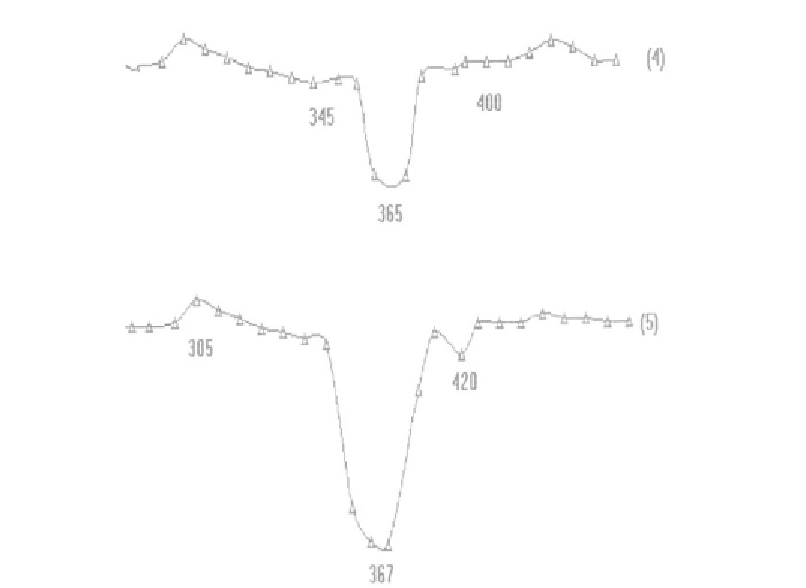Chemistry Reference
In-Depth Information
Figure 3.15. View of DTG curves of PETP - fibres, modified by HC-3 (4) and HC-4 (5).
Curves of differential thermogravimentric analysis (DTG) (Figure 3.14 - 3.16) were
taken for definition of this temperature. Maximum rate of mass loss of initial PETP - fibre is
observed at 442ºC (Figure 3.14). In fibres modified by HC-1, HC-2, HC-5, HC-6, HC-7 this
index shifts into the region of much higher temperatures (Figure 3.14 curves 2, 3; Figure 3.16
curves 7, 8). During introduction of additives into PETP - fibre (additives - HC-3 and HC-4)
maximum rate of mass loss shifts in the direction of the low temperatures region.
Data of thermal stability of modified and unmodified PETP - fibres, obtained on the
basis of TG, are given in Figure 3.17. These curves show, that thermal stability of PETP -
fibres with dye - modifier introduction increases, as intensive decay of modified samples
begins at much higher temperatures and decay depth at one and the same temperature
decreases. HC-3 and HC-4 are the exception again. The greatest thermostabilizing activity is
displayed by PETP - fibres modified by HC-2.
From the data of Table 3 it is seen that introduction of hexaazocyclanes into PETP
increases temperature of the beginning of PETP decay by 15-70ºC, HC-3 and HC-4 being the
exception. Such effect is probably connected with structural changes in PETP, taking place at
addition of HC-1, HC-2, HC-5, HC-6, HC-7 compounds into polymer, and possible inhibiting
effect on thermooxidative destruction of PETP.

Search WWH ::

Custom Search